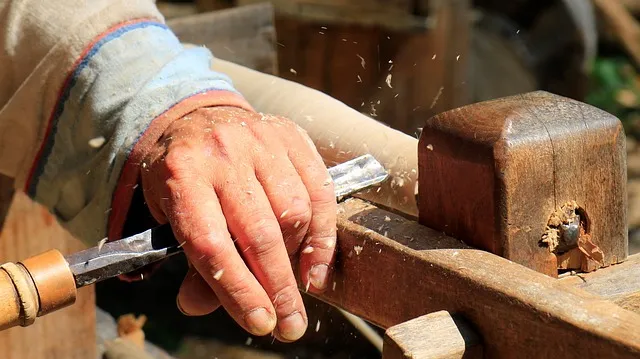
Woodworking is a diverse field that encompasses various disciplines, including furniture making, cabinetry, wood carving, and more. It offers a range of opportunities for expression, craftsmanship, and entrepreneurship. Before diving into the world of woodworking, it’s important to have a solid foundation in the basics. A mechanical reasoning or aptitude is also essential, mainly because woodworkers work with such a variety of machines and tools. A tool in the hands of an untrained or inexperienced woodworker is a recipe for disaster.
Precision is key in this field, as even the smallest mistake can ruin a project. Woodworkers need to be meticulous in their measurements, cuts, and assembly to ensure that their work meets high-quality standards. Woodworking requires a unique set of skills and qualifications to succeed in the industry.
Build a portfolio of your work and consider an apprenticeship or working for a woodworking company to gain experience. Networking with other woodworkers and attending trade shows can also help you break into the industry. Networking and building industry contacts play a crucial role in finding woodworking job opportunities.
If you have a passion for woodworking and are interested in turning your hobby into a career, there are several steps you can take to help you land a job in the woodworking industry.
Educational Background
Becoming a skilled woodworker often takes several months or even years. Skilled workers can read blueprints, set up machines, and plan work sequences. Because of the growing sophistication of machinery, many employers are seeking applicants who have a high school diploma or equivalent. People seeking woodworking jobs can enhance their employment prospects by getting training in computer applications and math. Operators set up the equipment, cut and shape wooden parts, and verify dimensions, using a template, caliper, and rule. After the parts are machined, woodworkers add fasteners and adhesives and connect the parts to form an assembled unit.
Having a strong educational background in woodworking is important when looking for a job in this field. Consider enrolling in woodworking classes or programs at a trade school or community college to gain the necessary skills and knowledge.
Build Your Skills
They also install hardware, such as pulls and drawer slides, and fit specialty products for glass, metal trims, electrical components, and stone. Finally, workers sand, stain, and, if necessary, coat the wood product with a sealer or topcoats, such as a lacquer or varnish. Here are the most important steps to consider as you learn how to start a business in this field. By combining your woodworking skills with sound business practices, you can create a thriving woodworking business that brings joy to both you and your customers. Embarking on a woodworking journey can be an incredibly fulfilling and rewarding experience.
Practice makes perfect, and the more experience you have working with wood, the better your chances of landing a job in woodworking. Spend time honing your craft by working on personal projects or volunteering at woodworking shops to gain hands-on experience.
Networking
Networking is key in any industry, including woodworking. Attend woodworking events, workshops, and conferences to meet professionals in the field and make connections that could lead to job opportunities.
While formal carpentry training can provide a strong foundation in woodworking techniques and best practices, it is not strictly necessary for starting a woodworking business. Many successful entrepreneurs in this field are self-taught or have gained experience through apprenticeships. However, some level of expertise in woodworking skills, tool usage, and safety protocols is essential for producing quality products and running a successful business. And, although a formal education is helpful, it is not necessary, and most woodworkers receive on-the-job training under the supervision of other more experienced workers.
Even specialized artisans generally use CNC machines and a variety of power tools in their work. Much of the work is done in a high-production assembly line facility, but there is also some work that is customized and does not lend itself to being performed on an assembly line. As we mentioned before, many different tools and supplies are needed for woodworking. You don’t want to spend money on tools and supplies that you won’t use.
Create a Portfolio
Put together a portfolio showcasing your best woodworking projects to demonstrate your skills and experience to potential employers. This will give them a visual representation of your capabilities and help set you apart from other candidates.
FAQs
Q: What are some entry-level positions in woodworking?
A: Some entry-level positions include woodworking assistant, apprentice carpenter, or shop assistant.
Q: How can I stand out during a job interview for a woodworking position?
A: Show enthusiasm for woodworking, be prepared to discuss your experience and skills, and bring examples of your work to showcase.
By following these tips and putting in the effort to build your skills and network within the woodworking industry, you can increase your chances of securing a job in woodworking. Good luck!



